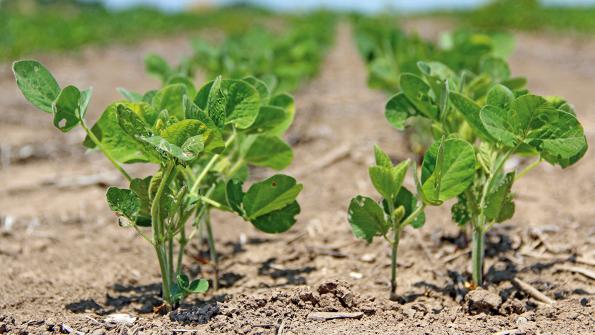March 18, 2016

For some time now STS soybean varieties have been available that are more tolerant to certain ALS herbicides than conventional soybeans (STS stands for sulfonylurea tolerant soybean).
Last year DuPont/Pioneer released an advancement on this technology. Dubbed “Bolt,” these soybeans are truly more tolerant to ALS herbicides than the older STS varieties.
Although most pigweeds in the Mid-South long ago became resistant to the ALS chemistries, this technology still has a fit for a number of uses.
Reduced and even zero-day plant-back intervals and better crop tolerance to products like LeadOff, Finesse (wheat rotation) and Basis Blend products are some of the benefits to growing Bolt soybeans.

Bob Scott
This expands burndown options for many growers where these products offer control of winter/spring annual weeds and ryegrass as well as extended residual control prior to and after planting. This is especially beneficial where early-planted soybeans is a goal. As with all herbicides, always read and follow label directions for plant-back intervals.
In recent years many rice growers have chosen STS varieties to plant around rice fields to minimize the effect of drift of ALS chemistries such as Permit, Strada and Londax. In fact, a few years ago, Gowan Company received a label for over-the-top applications of Permit Plus to STS soybean. More recently, Aceto labeled in-season applications of their brand of halosulfuron, Halomax, for use in STS soybean.
However, some ALS herbicides such as League, Grasp and Regiment can still injure STS varieties.
In university trials across the Mid-South last year, studies confirmed that while direct applications of products like Grasp and Regiment could still injure Bolt soybeans, the injury was far less than that observed on regular STS soybeans. Bolt soybeans will not tolerate full rates of these products. However, at low rates (simulated drift), Bolt soybeans recovered faster than STS from ALS injury.
In areas where soybean fields are surrounded by rice, this can greatly reduce the potential for yield loss from drift associated with certain ALS herbicides.
Under our Flag the Technology system, Bolt soybean fields would be identified the same way STS fields are by using a yellow flag. The presence of both a white and a yellow flag would indicate both STS/Bolt and glyphosate tolerance. At this time I am not aware of a LibertyLink/Bolt-tolerant soybean, however, if there are LL/STS varieties out there, they would be designated by the presence of both a green and yellow flag.
For more information on Flag the Technology you can visit our web site at www.uaex.edu. Our soybean research is funded in part by the Arkansas Soybean Promotion Board this support is greatly appreciated.
You May Also Like




